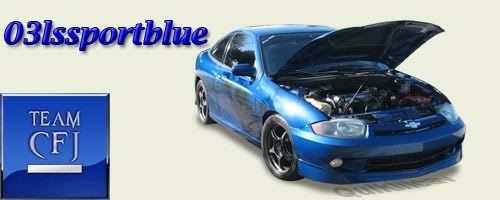ok, I was going to wait to drop this on people but the cat is already out of the bag, so to just kind of throw the information out there here we go.
I've been thinking a lot about hybrids, and why exactly we can't mix and match ecotec parts and it dawned on me after having a random conversation with ryan (oldskool).
Basically, bottom end geometry is super imperative when you are INCREASING your stroke. Why? Because you're reducing your clearances with the deck height, and usually pushing things to the outer limit of such.
But with DEstroking, things are a bit different because you're increasing your clearances. Working within the bounds of the ecotec architecture, we actually have quite a few possibilities of taking mix/match engines to the next level with minimal custom part purchases.
Why would we do this? Because we can lego together a combination that will give us an ideal rod /stroke ratio, as well as maintaining a decent displacement. There are three seperate possible combinations that I came up with, however the third has one small hangup that will potentially mean it won't work... however, there is a work around.. I'll explain further when we get to it.
So what do we have to work with? the port injected ecotec engines will all swap into a Jbody with minimalistic modifications. Anything that doesn't use an L61 crank will need to utilize an external crank trigger wheel. Anything that uses an LSJ crankshaft will also need an LSJ clutch and flywheel as well as a GM transmission spacer (a rather cheap part... GM p/n 12583853). All these combinations will need an L61 oilpan bolted to the bottom of the LE5 block. All these combos need to be used with either an LSJ head or L61 head. VVT will not work in the Jbody with out some serious r&d and modification.
All of the possible combinations will utilize an LE5 block. The LE5 block is a genII block, which has improved rigidity and strength when compared to genI blocks.
here's what we have to work with for the bottom end:
LE5 (2.4L n/a)
bore = 88mm
rods = 143.7386mm
stroke = 99mm (also sometimes quoted as 98mm)
wrist pin diameter = 20mm
R/S ratio = 1.45 (aka GARBAGE)
L61 (2.2 n/a)
bore = 86mm
rods = 146.5mm
stroke = 94.6mm
wrist pin diameter = 20mm
R/S ratio = 1.54
LSJ (2.0 s/c)
bore = 86mm
rods = 145.5mm
stroke = 86mm
wrist pin diameter = 23mm
R/S ratio = 1.69
so from these, I can think of a few pretty sweet combinations. One that uses all OEM parts, one with custom rods, and the other that sorta won't work but sorta will.
*interesting side note: the L61 has the longest rods, NOT the LSJ.. hmm interesting. I'm beginning to wonder if the deck height is different across the different variants.
2.1L OEM rod
engine components:
-LE5 block
-LE5 pistons
-L61 rods 146.5mm
-LSJ crank
extras:
-external trigger wheel
-GM trans spacer p/n 12583853
-LSJ clutch
-LSJ flywheel
-IF block has integrated oil cooler, you need the external oil cooler adapter in order to use the L61 thermostat housing. more information at the bottom of the post)
attributes:
86mm stroke x 88mm bore
r/s ratio of 1.70:1
piston is 3.74mm lower in the cylinder
here we have the 2.1L ecotec. Probably the most scattered mix of OEM parts I can think of. It has a r/s ratio akin to the LSJ's 1.69:1, which means it will be very good for upper midrange and top end power with a decently flat torque curve depending on camshaft selection. the 2.1L is a minimal displacement loss for a more rev-friendly short stroke. The piston being 3.74mm lower in the bore will drop the static compression slightly which will counteract the compression increase of the 88mm, 10.5:1 cr piston shooting into the L61/LSJ combustion chamber.
2.1L custom rod
-LE5 block
-LE5 pistons
-Custom length rods 155.74mm
-LSJ crank
extras:
-external trigger wheel
-GM trans spacer p/n 12583853
-LSJ clutch
-LSJ flywheel
-custom made 12mm longer rods (155.74mm)
-IF block has integrated oil cooler, you need the external oil cooler adapter in order to use the L61 thermostat housing. more information at the bottom of the post)
attributes:
86mm stroke x 88mm bore
r/s ratio of 1.81:1
piston is normal height
this engine has the same displacement as the other engine, but with the custom length longer rods. the longer rods will maintain the piston at the correct height, and maintain the higher compression resultant from using the 88mm piston into the L61/LSJ head. The longer rods will also move the r/s ratio to 1.81:1, which means the engine will be really happy revving extremely high. This would probably be a very good n/a setup.
2.3L non-functioning version
-LE5 block
-LE5 pistons
-L61 crank
-L61 rods 146.5mm
extras:
-IF block has integrated oil cooler, you need the external oil cooler adapter in order to use the L61 thermostat housing. more information at the bottom of the post)
attributes:
94.6mm stroke x 88mm bore
r/sratio of 1.54:1
piston is 1.64mm higher in the bore, pushing the piston above the deck surface (assuming the compression height is NOT enough to compensate which I'm assuming it is NOT).
this setup is basically a big bore L61 with a slightly domed piston. However, it seems that the longer rods of the L61 will push the piston above the deck 1.64mm, which means it probably wouldn't be a good idea to try this combination. However, you could order custom pistons in order to stay within the block, and maintain the decent r/s ratio of 1.54:1. This combinatino also requires no external crank trigger since the L61 crank has the 6+1 pattern integrated into it. I would have a more concrete argument for this engine if I had the LE5's compression height, but have yet to find that dimension.
2.3L short rod
-LE5 block
-LE5 pistons
-LE5 rods 143.74mm
-L61 crank
extras:
-IF block has integrated oil cooler, you need the external oil cooler adapter in order to use the L61 thermostat housing. more information at the bottom of the post)
attributes:
94.6mm stroke x 88mm bore
r/sratio of 1.52:1
piston is 2.2mm lower in the cylinder
this 2.3L will work with all oem parts, the downside of this combination is that you get a slightly worse than L61 r/s ratio, although on the plus side the r/s ratio is better than the LE5. the piston being lower will also slightly fight the compression bump when using the 88mm piston and the L61/ LSJ head.
these combinations (unless otherwise noted) will work. how WELL they will work comes down ultimately to real world testing. any of the engines could be fitted with custom rods in order to eliminate the piston being lower in the combustion chamber, however I don't think it would make too much of a difference unless you wante to maintain the CR bump by using the 88mm piston with the LSJ/L61 head.
*this company makes an adapter that allows you to run an external oil cooler and it bolts in place on the LSJ block... not 100% sure it will work on the LE5 however. Majority of LE5s came with no oil cooler though.
http://www.unique-fabricating.com/
the benefits of a good r/s ratio are really worth their weight in gold, especially in an engine being used for racing or weekend warriors. a better r/s ratio will slow down your piston speed at a given rpm, reduce piston side-wall loading, and increase dwell at TDC.



















